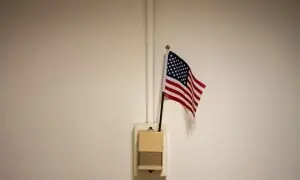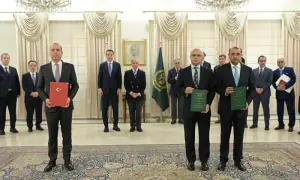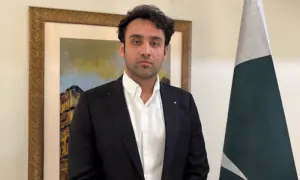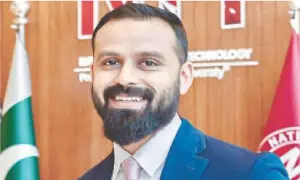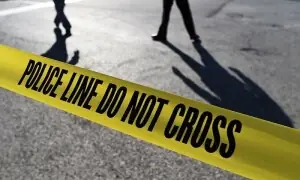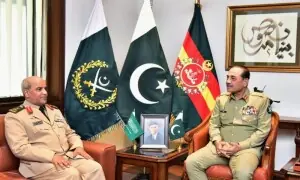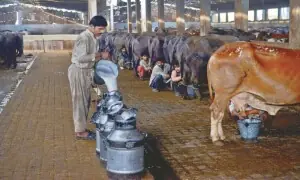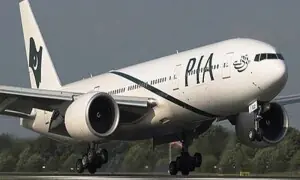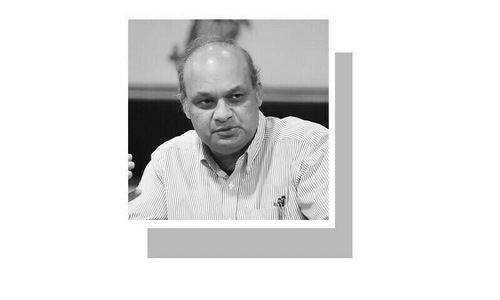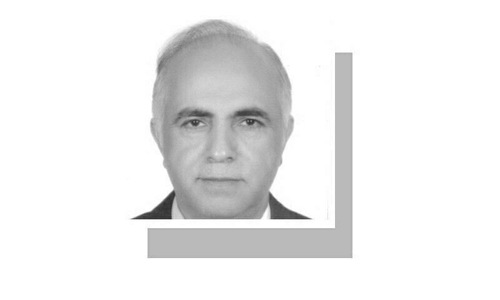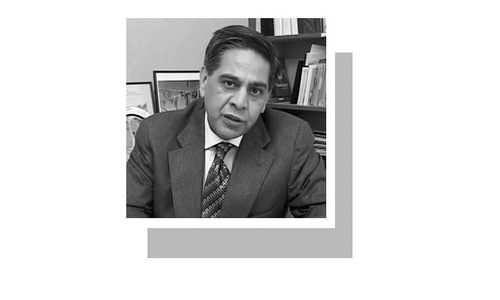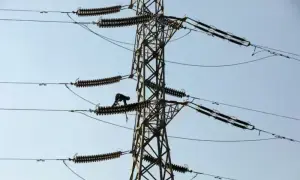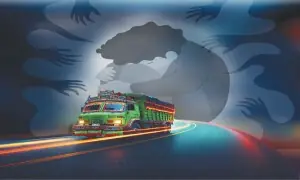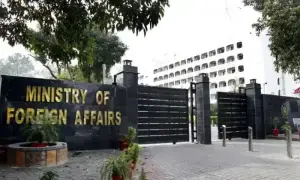Akhtar Balouch, also known as the Kiranchi Wala, ventures out to bring back to Dawn.com’s readers the long forgotten heritage of Karachi. Stay tuned to this space for his weekly fascinating findings.
 |
| enter image description here |
Tabish sahib arrived three days later. In the meantime, I had forgotten about the museum and his plans to pay it a visit. We went to a hostel near the press club where I had arranged his lodgings. After freshening up he asked, “So, when are we going to the museum?” How could I explain to him that I did not know a thing about the museum’s location? He spotted the frown and decided for us to visit the Urdu Bazaar that day. “We’ll go to the museum tomorrow,” he said. I breathed a sigh of relief. My thoughts were that by the next day I would surely manage to acquire the address of the place.
Later in the evening, I inquired from some friends about it. Not only did nobody know its location, all of them were rather confidently denying that any such place existed. The next morning, I paid the press club a quick visit, hoping to find some information about the mystery museum, before meeting Tabish sahib at the hostel.
I was greeted by one of my friends, Majid, a photojournalist, upon reaching the club. By now, I was so anxious to know something, anything, about the museum that I threw the question at him without even properly greeting him. He sensed the curiosity in me. Sadly, he did not have any knowledge about a Victoria Museum. However, he told me about a museum that was rarely visited by Karachiites which I already knew about. If you go to the Arts Council, you will see that right around the corner there is a huge park. In the middle of the park stands the museum. It is called the National Museum.
 |
A little while later Tabish sahib and I were on our way to the desolate park and the silent museum building. The central entrance of the park had a signboard erected in the corner. “National Museum,” it read. Inside, there was an empty ticket booth. So, we did what anyone in Karachi would do. We gladly moved on towards the museum without tickets. The building of the museum is about half a furlong away from the main entrance. We covered the distance slowly, looking around. There was no one at the reception desk as well. Crossing the desk, we had started climbing the stairs to the first floor when we heard thumps of someone’s running feet behind us. It was the missing museum receptionist probably. He asked for our tickets. We told him there was no one inside the ticket booth we could buy tickets from. In reply, he told us to give him 20 rupees for the tickets and we gave him the money. We were then told to wait downstairs. To my astonishment, the man really did bring us tickets instead of putting the 20 rupees into his own pocket. Soon, we could begin our tour du musée.
With the tickets in our hands, we climbed the stairs and thought of turning right. A man, probably the caretaker, standing in the hallway told us not to go there as it was closed on account of repair and maintenance. Disappointed, we turned left and were shooed away from that direction on account of the same reason. The man then suggested that we proceed to the second floor. So we did.
 |
Here, on the right was a gallery of the ancient civilizations. Tabish sahib and I entered the gallery. Placed straight ahead was a huge glass box. There were some dolls in it. The box had an inscription that said ‘Kafiristan’ in Roman Urdu. Right beside the box stood a statue of an armed man. The caretaker told us it was the statue of a ‘Kafir’ (infidel). “It seems the number of infidels in Pakistan is increasing every day,” Tabish sahib and I made a joke about the statue in the context of the country’s current dilemma. “Which kafirs does this man belong to?” We asked the caretaker. He quickly replied, “The ones from Kalaash.”
 |
Apart from a couple of statues representing the various provinces, there was nothing notable in the gallery. Thus, we turned to the next exhibit, the Independence Gallery. Here, the most important articles related to the independence movement of Pakistan were placed in two glass boxes. One had Allama Iqbal’s turban and his cane, while the other had a watch, a cigarette lighter, and a gold miniature bottle of perfume, items once used by Liaquat Ali Khan. Another glass box had a sword in it, said to have been gifted to Muhammad Ali Jinnah by the Aligarh district chapter of the then Muslim League.
 |
 |
We moved on to the next gallery, the Quran gallery. Before we could enter, we were stopped once again and asked to remove our shoes. Of course, so we did.
On our way in, we asked the caretaker to be our guide. He apologised with as little regret as possible, telling us to go ahead by ourselves. And yes, so we did. The gallery had ancient scripts of Quran on display. Period.
 |
Next stop: The Gandhara Civilization Gallery. A number of Gautama Buddha statues sat peacefully and seemed to have no interest whatsoever in the visitors. Not their fault. They probably felt out of place.
 |
An epigraph caught my eye. It read, “Hindu Statues.” I inquired from the man sitting in the gallery that if these were Hindu statues, what religion did the other ones belong to? He gave me a discontent look and replied, “Buddhism.”
 |
Besides the mentioned galleries, there were galleries of Harappa, Mohenjo-daro and prehistoric times which were closed for repair and maintenance. The caretaker said the repair work had been in progress for over a year now.
Upon exiting the building, we saw some statues and sculptures lying on the floor on the left. Tabish sahib and I started moving in their direction but the ticket man stopped us, telling us that it was a ‘restricted area’. Some inquiry into it and we discovered that these were the statues caught before they could be smuggled off shore from Karachi a few days ago. Investigators claimed these were of no value.
By this time we were frank enough with the ticket man to inquire about the history of the museum building. He told us the cornerstone of the museum was laid in 1970. I shared with him that according to my knowledge, the park in which the building stood was quite old. He agreed, and pointed in a direction, suggesting we should go and read the inscription on the plank. Tabish sahib and I went behind the building and read the plank which dated back to 1923. Alongside was a pillar that had an inscription: “Sobhraj Chetumal Terrace.”
In his book, Karachi - Past, Present and Future, Alexander F. Bailey writes, “A new museum was founded at Burns Garden. It was called the Victoria Museum.”
When the Frere Hall’s construction completed in 1851, one of the rooms on the first floor of the building was dedicated to the museum. It was later shifted to Burns Garden and inaugurated by the Duke of Kent.
Renowned historian, Usman Damohi writes in his book, Karachi Tareekh Ke Aaiene Mein that in 1844, Charles Napier founded the Sindh Association. It was an institution meant for the conservation of historical artifacts of Sindh. The association collected many an artifact, but Napier never had the time to invest in its progress. All these artifacts were then simply locked away.
In 1892, the museum was shifted to the upper floor of the newly constructed D. G. College building and the responsibility was transferred to the Karachi Municipality. The municipality handled the task praise-worthily and turned it into an exemplary museum. It was then decided to turn the Karachi museum into a replica of the London museum. The authorities made an appeal to the people of Karachi to donate as many ancient artifacts as possible. Meanwhile, on the 21st of May, 1892, the official building of the museum stood completed. This was the Victoria Museum.
 |
In her book, Malika-e-Mashriq (Queen of the East), Mehmooda Rizwiya speaks of a museum in the Burns Garden which was shifted to the Frere Hall due to the war. She goes on to paint a picture, writing that the museum stores stuffed animals, artifacts from the Mohenjo-daro, statues of people of Hind and abroad, portraits, paintings and pictures of famous people from around the world, and two human skeletons.
Well, all else was sweetness and light, but the question remained: Where had the Victoria Museum gone?
[To be continued...]
Photos by Akhtar Balouch
Translated by Ayaz Laghari
Read this blog in Urdu here.
Listen to this blog in Urdu:


